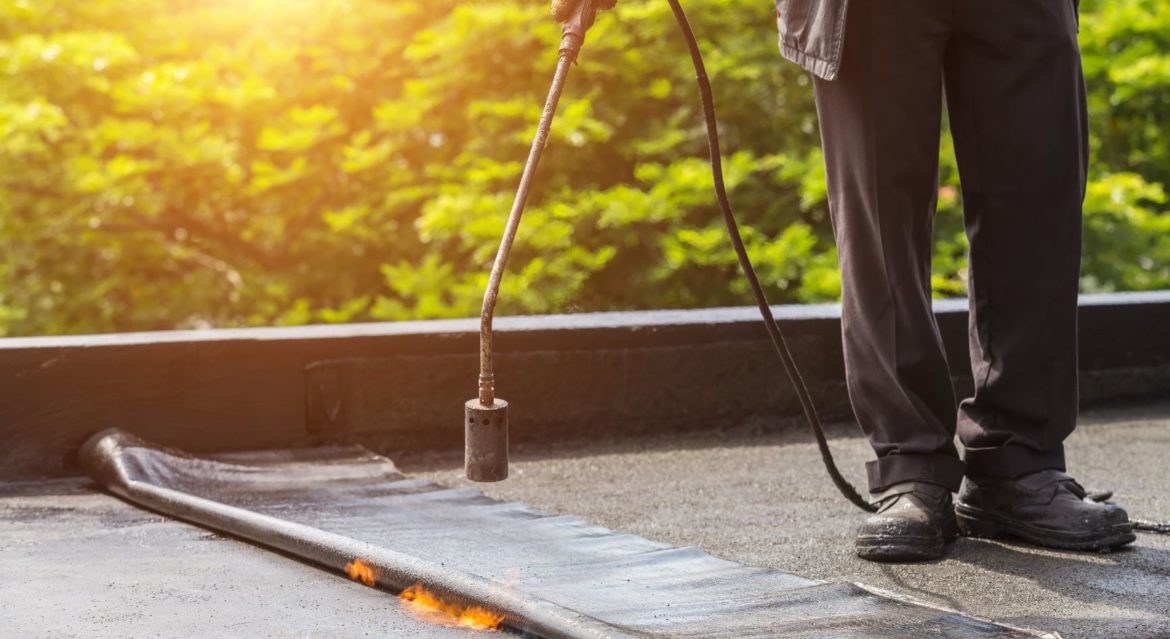Flat roof maintenance Q&A

During the early part of the 20th Century, flat roofs were relatively uncommon, but when a large-scale programme of building was undertaken after the Second World War, they became popular as an economical alternative to traditional pitched roofs. Although they are widely no longer used in modern housing developments, they remain popular with architects and homeowners looking to create a minimalistic aesthetic.
Whilst the name may indicate a surface that is completely level, a slight angle is required to allow rainwater to run off, and the level of this angle depends on the material used.
If you are thinking of purchasing a property with a flat roof, its condition should be checked and the estimated future life span and maintenance liability established, as replacing large areas of flat roof can prove expensive.
Do I need specialist buildings insurance?
No, not necessarily but it can affect the level of your Buildings Insurance premiums. Most insurers will require you to provide details of the percentage of flat roof area to the entire roof area, as felt covered roofs in particular, can prove unreliable and have a limited life. As such, these are considered a higher risk, which in turn can affect the level of your premium and in some extreme cases your ability to obtain buildings insurance.
What are the most durable construction materials?
A wide variety of materials can be used, the most popular being mineral felt, fibreglass and rubber, and in the case of older or listed buildings, lead.
- EPDM (Ethylene Propylene Diene Monomer) Rubberised Roofing
Durability makes EPDM a popular choice as it offers high levels of water and UV protection and is relatively easy to install. It requires very little in the way of maintenance and is often subject to a guarantee. This is more expensive but has a considerably longer life than traditional roofing felt.
- GRP (Glass Reinforced Plastic) Fibreglass Roofing
GRP is becoming increasingly popular and is particularly well suited to roofs that are of a non-standard shape. GRP fibreglass is a paint-on covering that provides an aesthetically pleasing and lightweight yet durable finish. Whilst not the most economical option, it is weatherproof, resistant to damage, and is often subject to a guarantee.
- Mineral or Torch-on Felt Roofing
This type of material is by far the most common and usually comprises three layers of bitumen felt that are melt-welded to the surface of moisture resistant ply sheets to form a strong, waterproof roof coating. Speed and ease of installation, as well as cost-effectiveness and reliability make torch-on felt coverings the most popular choice, yet with a lifespan of around 15 years it can prove unreliable.
How do I maintain my flat roof?
A bi-annual inspection of your flat roof is advisable and should flag up any potential issues before they become problematic. It is also worth checking the condition of your roof after a spell of adverse weather, such as heavy rain, snowfall or high winds, to ensure no damage has been sustained. It is also good practice to keep guttering free of leaves so that rainwater can easily disperse.
What are common problems associated with flat roofs, especially felt flat roofs?
More often than not, the first indication that there is a problem with a felt roof is that damp stains start to appear on the ceiling below, often without warning. This could be that the mineral felt covering has come to the end of its life, therefore replacement is often the only option.
What are tell-tale signs to look out for?
- Ponding
This is when pools of water collect on the surface of the roof which leave concave areas surrounded by a water mark in dry conditions. Left untreated they may cause damage to your roof but regular maintenance should ensure it can be dealt with before becoming a more serious issue. - Blistering
This is caused when pockets of air are trapped between the layers of a felt roof which then expand, eventually stretching and cracking the surface, allowing water to pass through. Should this happen, the affected area should be professionally repaired, resealed and made waterproof. - Splitting
A number of factors can cause your roof to split: thawing after a period of freezing weather, standing water, or simply poor workmanship. Whilst a number of products exist that will allow you to temporarily reseal the material and repair the split, replacing the covering to the damaged area is the best long-term solution to deal with this type of problem.
If you need a survey, valuation, report of advice from a Chartered Surveyor, you can get in touch on 01206 245895 or make a quick enquiry here.